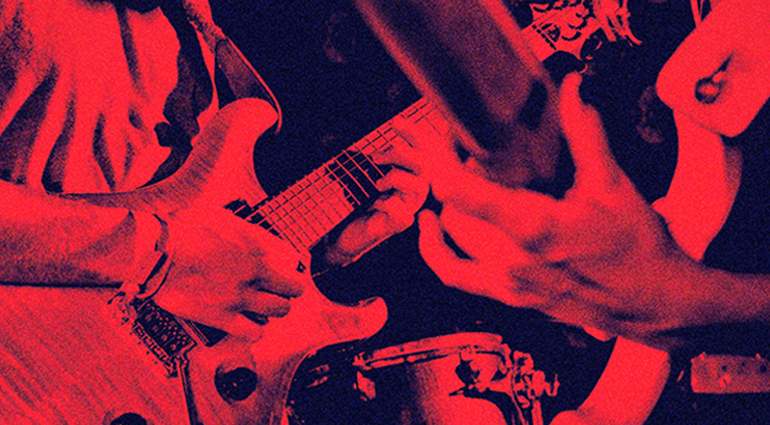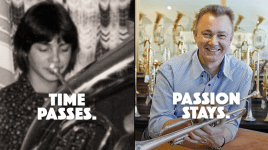
There have always been and still are profound events – some dramatic, some simply in the right place at the right time – also musicians and their albums that have left a lasting mark on music history. To list all the turning points is simply impossible. After all, the musical world turns day by day and every second. But here are a few, without which there would not have been some legends… 🎸
1. Bob Dylan’s electric band
An icon of the folk scene, an artist celebrated as the most gifted protest singer par excellence, the voice of the underclass: Bob Dylan was and is a hero, though typically accepted by many only with his acoustic guitar. He was able to bring to life and reflect the feelings and thoughts of a generation in his lyrics and music. Some fans, however, would not forgive him for switching to the electric guitar and electric music. He was booed by the die-hard acoustic folk scene. But if he hadn’t gone electric, there would have been no significant milestones in music history, such as Highway 61 revisited or Blonde on Blonde – two of the greatest rock records of the 1960s. Bob Dylan doesn’t fit into any pigeonhole.
You are currently viewing a placeholder content from Youtube. To access the actual content, click the button below. Please note that doing so will share data with third-party providers.
2. Tony Iommi’s lost fingertips
The birth of metal is inextricably linked to an accident that happened to Tony Iommi when he was just 17 years old. The Black Sabbath guitarist got his hand caught in a machine while working in a sheet metal factory and lost the fingertips of the middle and ring fingers of his right hand. Instead of giving up, he made prostheses out of plastic and scraps of a leather jacket. But especially since he had no feeling in the prosthetic fingertips, he proceeded to tune the strings lower. It was nothing less than the foundation for the menacing power chords and the birth of the down-tuned metal sound.
You are currently viewing a placeholder content from Youtube. To access the actual content, click the button below. Please note that doing so will share data with third-party providers.
3. When Jimi Hendrix destroyed God
Simply everything changed with Jimi Hendrix. It was 1966, and Eric Clapton’s reputation was solidified. His fans even revered him somewhat pompously as a deity. He was the guitar hero personified in blues-heavy rock. Then an unknown American guitarist asked to jam with Cream in London. It was to be a fateful evening. The guitarist’s name was Jimi Hendrix. Clapton was overwhelmed. Clapton had set the bar. Through Hendrix, that bar was redefined. And then, one night, the 6-string magician also burned his guitar on stage.
4. The Beatles release “Sgt. Pepper’s Lonely Hearts Club Band”.
The mop tops not only expanded their song palette with Sgt. Pepper in 1967. At the same time, they showed a proper psychedelic appetite. In fact, with this album, the Fab Four made the transition from lovable entertainers to revolutionary artists. From ideas to concept and design to production techniques, everything was turned upside down. It was an explosion of creativity. A milestone that made other bands look extremely pale in comparison, for a long time. Only one person was not impressed: Jimi Hendrix. He opened his programme three days after the release of the Beatles album with a cover version of the title song.
You are currently viewing a placeholder content from Youtube. To access the actual content, click the button below. Please note that doing so will share data with third-party providers.
5 The Rise & Fall of Ziggy Stardust
David Bowie had been trying to break into the music industry in a variety of ways for almost 10 years. He performed in cabaret shows, made a music album for children and even advertised ice cream. Then in 1972 he invented the artificial character Ziggy Stardust, the androgynous character who came from Mars and landed on Earth. A gender game that made David Bowie internationally famous and laid the foundation for the glam rock that dominated the early ’70s. Without Ziggy Stardust’s short visit to musical mother Earth, many bands with this style would probably never have existed.
6. When the punk beast was born
Punk was raw, direct and non-conformist. According to Joe Strummer of the Clash, it was the Ramones’ debut album that opened the punk Pandora’s box in 1976 and paved the way for bands like the Sex Pistols, the Clash and several others. The initial sales figures were definitely bad. That didn’t change the fact that the Ramones, with their songs not even three minutes long, free of overblown lyricism and musical complexity, hit exactly the zeitgeist of the youth. Rudimentary but catchy chord sequences without any claim to artistic virtuosity, minimalist statements about youthful rebellion and life in New York brought to the point. It was no longer about being admired as a star, not even about what the music said. It was about punk.
https://youtu.be/JPBEaSDR8M0
7. The first rap song enters the Top 40
When the Sugar Hill Gang released Rapper’s Delight in 1979, it was the first rap song to make it into the Top 40. What many take for granted today was completely new and previously unheard at the time. The song made hip-hop culture known to a wider audience. Quite a few people thought that rap was a trend that would soon be over. In fact, as we all know, they were proven wrong. Despite all the prophecies of doom, rap and hip-hop have established themselves with gigantic sales figures. Not infrequently, these are figures that other genres from rock to pop can only dream of.
8. The death of Ian Curtis and the birth of New Order
A tragic moment for the history of rock was the early death of Ian Curtis. The band Joy Division left a strong impression with their dark, bass-driven yet energetic music and Ian Curtis’ lyrics. Then the drama: when Curtis committed suicide in May 1980, the true scope of the subtexts became clear. From the ashes rose the phoenix to lead the alternative dance music of the 1980s: New Order. The fusion of guitar-heavy new wave music with electronica and house influences emerged; the Madchester scene was born and with it the foundation for the Britpop era that burgeoned a decade later. Ian Curtis died too soon, but he left an absolutely defining legacy.
You are currently viewing a placeholder content from Youtube. To access the actual content, click the button below. Please note that doing so will share data with third-party providers.
9. Nirvana destroyed hair metal
In the ’80s to the beginning of the ’90s, hair metal music, often considered superficial and overly commercialised, dominated. The hard rock clichés of endless parties with mind-altering substances, leggings with leopard patterns and co. were used up. Then came the alternative bands who no longer cared about this uniformed nimbus: grunge was lifted out of the cradle. First and foremost Nirvana around the icon Kurt Cobain. From 1991 onwards, they were the new role models who did their thing, addressed uncomfortable truths and thus shaped an entire generation.
You are currently viewing a placeholder content from Youtube. To access the actual content, click the button below. Please note that doing so will share data with third-party providers.
You are currently viewing a placeholder content from Facebook. To access the actual content, click the button below. Please note that doing so will share data with third-party providers.
More InformationYou are currently viewing a placeholder content from Instagram. To access the actual content, click the button below. Please note that doing so will share data with third-party providers.
More InformationYou are currently viewing a placeholder content from X. To access the actual content, click the button below. Please note that doing so will share data with third-party providers.
More Information




